If you’ve been to Thailand, you’ll have most likely heard of Khlong Toei and the notorious เจ็ดสิบไร่ (Jed Sip Rai) – an old mafia-controlled district that has a pretty poor name for itself. But, what many don’t know about is the current encroachment of luxury condo developments in the area. Soon, this place may cease to exist, and residents will be evicted from their properties. Properties they built, and people who helped Bangkok develop at the very start of 1950. I went to go investigate Jed Sip Rai, interview the people, and find out really what they thought about the current development talks, whether Jed Sip Rai is dangerous or not, and what we can do to help them. This article aims to capture the history, people and culture of this little community to act as a time capsule, before it may be pulled down entirely.
So, if you want to learn about this colourful little area, the problems that face these people, its history of it, and the approaching destruction – read on. I hope this will help people.
This will be split into two parts:
- The history
- My experience walking through the slums & interviews with the residents
An Untold History of เจ็ดสิบไร่ – Khlong Toei’s Most Feared Slum (Previously)
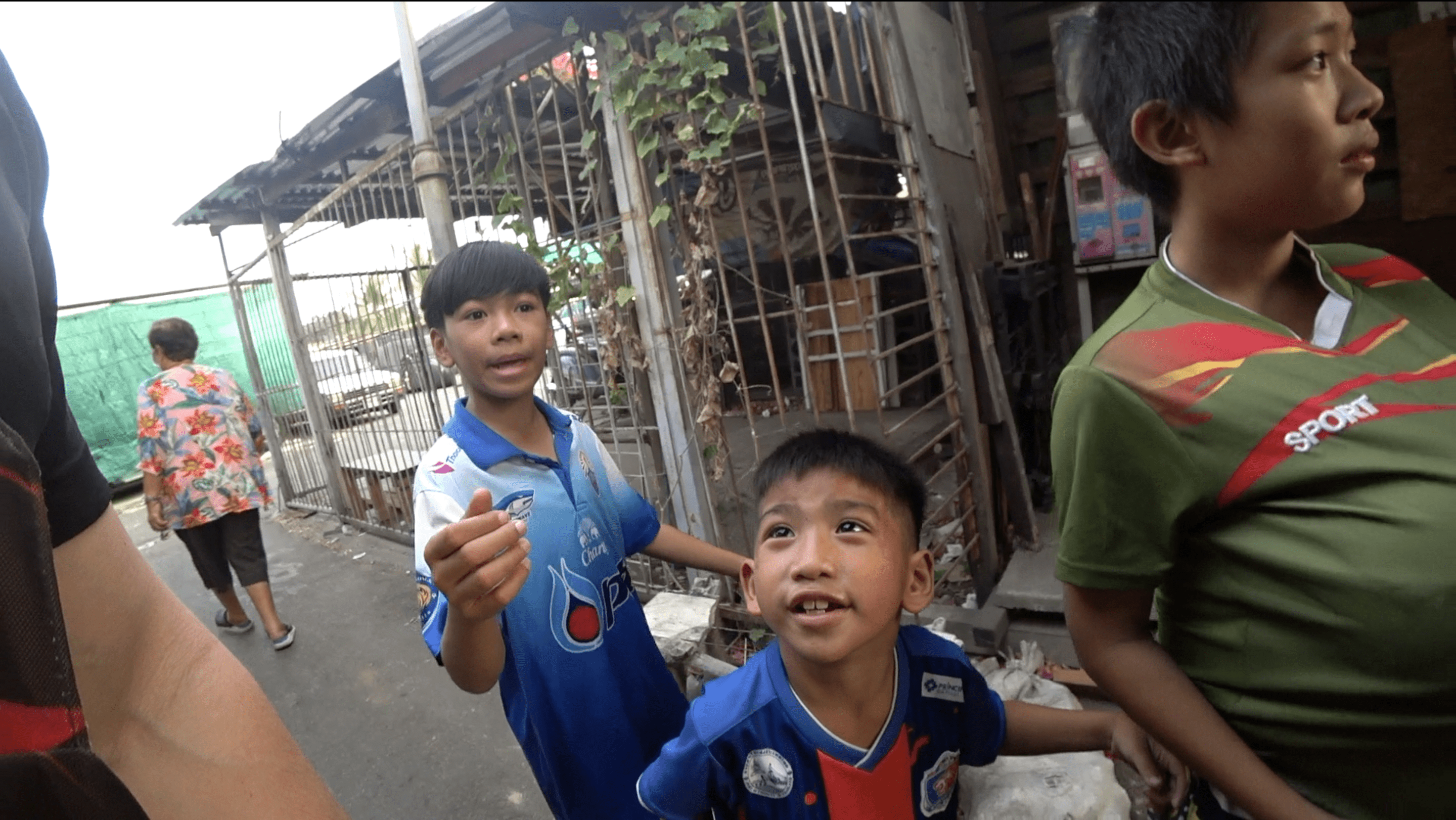
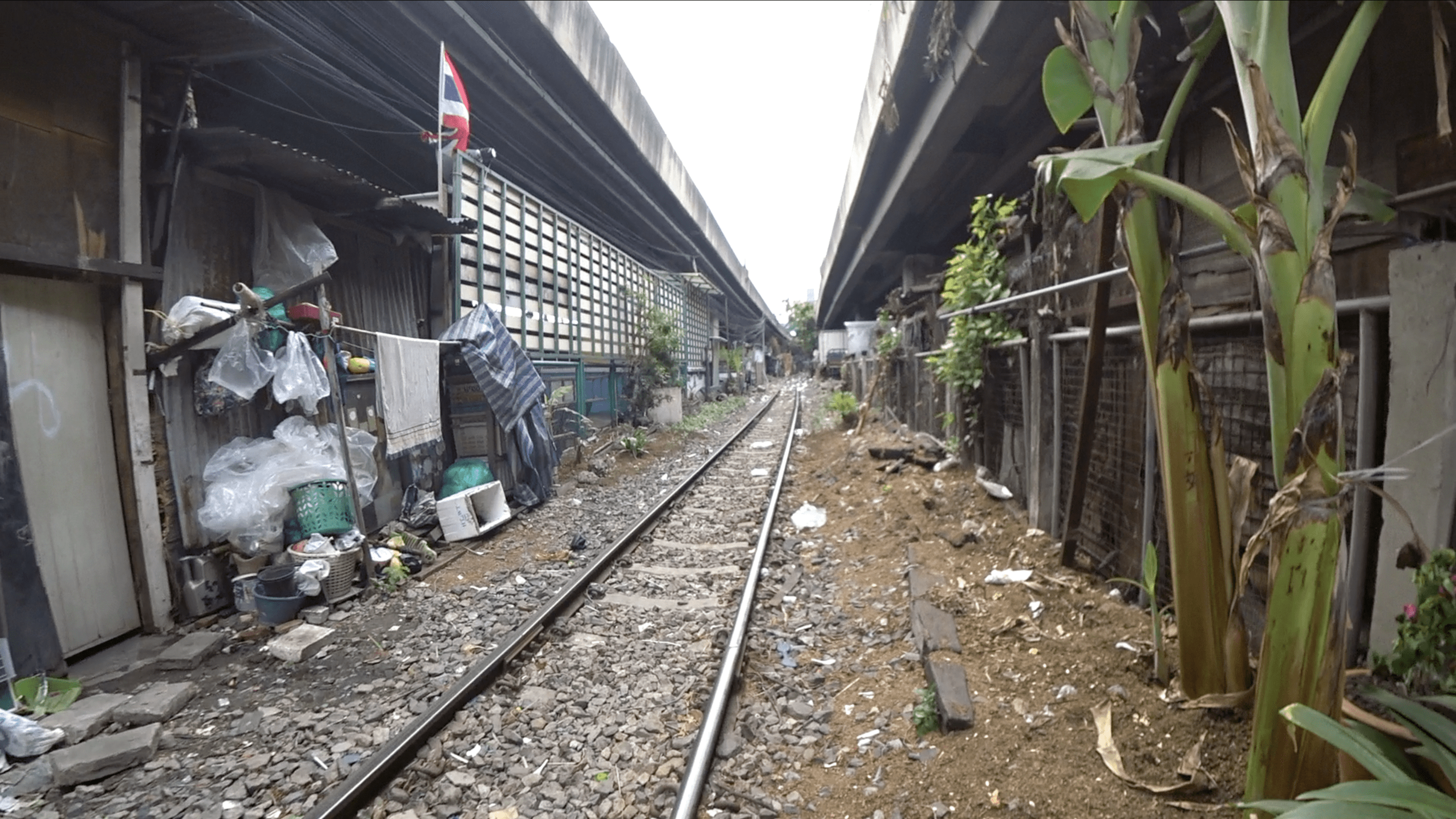

Now to understand the history of this place, it’s a fairly difficult task. If you simply type it in on Google, you will find poorly summed up, cookie-cutter versions that don’t do these people the justice they deserve. In fact, I found myself having to use my broken Thai skills to pull up old archives and pictures from a past not very well documented in its current form.
The Origins of The City of Angel’s Biggest Asset (1950-1990)
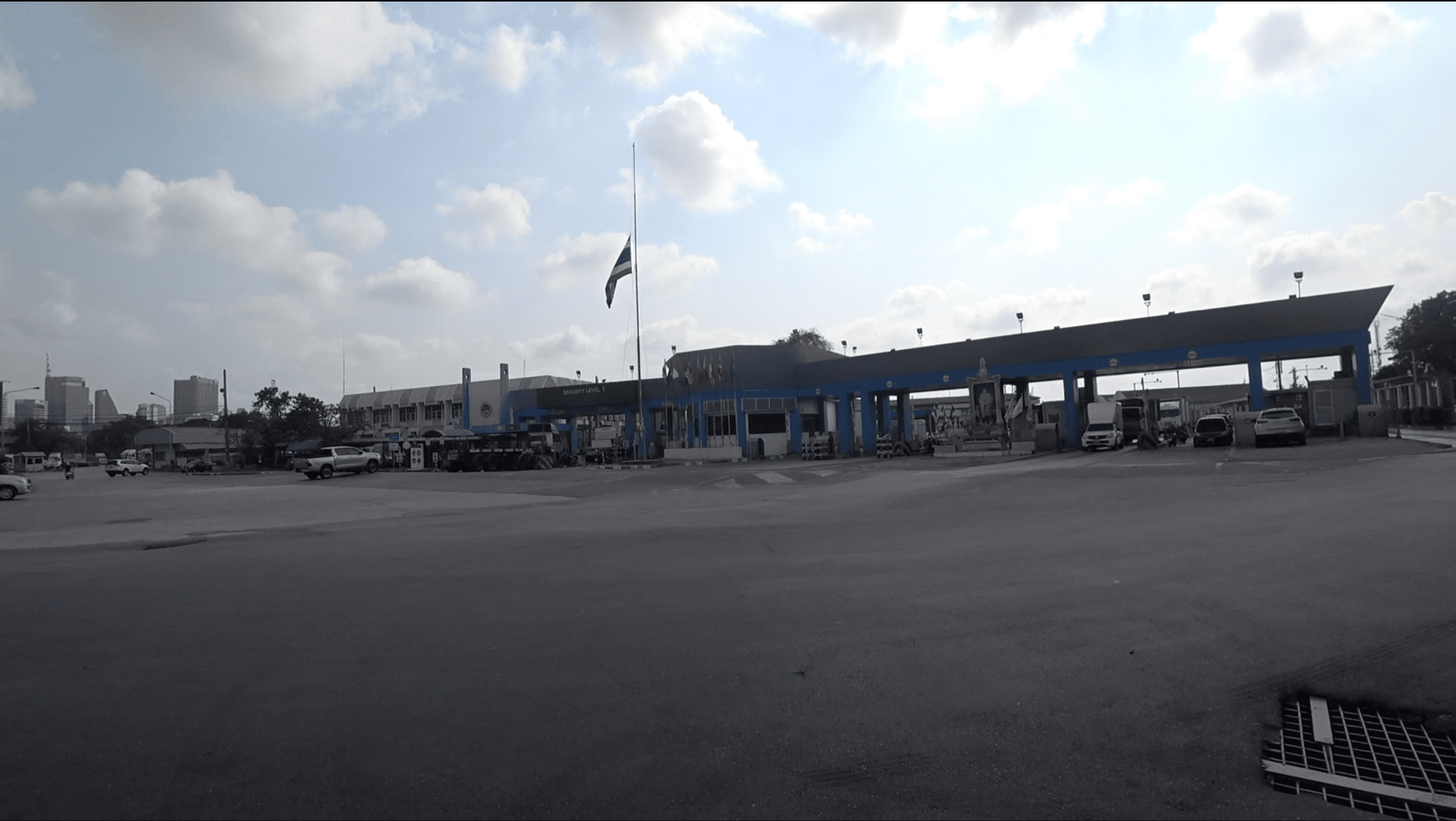

Bangkok’s formal name in Thai when directly translated to English means “the city of angels”. Back in 1930-50, this city of angels was about to develop rapidly. For this to happen, the government was in dire need of cheap labour. So, to satisfy this demand, they told people from all over Thailand and even neighbouring countries that, if they came to find work in the city, they would be able to build settlements on any of the government land available.
This saw a massive rise in population, and the cheap labour that was needed came.
Many small communities started to pop up around major work sites – one of these areas being the Bangkok Port (otherwise known to locals as the Khlong Toei Port). This is the reason Khlong Toei’s community Jed Sip Rai was built. Workers from the port would build this little community from scratch, directly on the port’s land, and pay a small rent to do so.
Many of the inhabitants would work on the port, helping to initially build the port, and then run the operations of it.
The Khlong Toei port had a huge part to play in the rapid development of the city, turning what was once just a small river village, into an industrial beast, helping Bangkok’s economy to boom through the 1950s – 80s, eventually receiving large foreign investment as companies scrambled to the developing market for cheaper operation costs.
The port is one of the pivotal reasons Thailand’s economy shifted from that of an Agricultural to an Industrial.
Saving Grace (1970s through 80s)
Although a peaceful worker’s settlement, petty crime was still high and people were extremely underprivileged there. Upon a visit to this area Mr Maier, an American Redemptorist Priest spoke with the residents and learned about the toils and troubles of the people here. Soon after he established an organization called the Mercy Centre, which still stands today and continues to help those in need.
One of the first things they set out to do was to offer a school for the children who didn’t receive an education but rather helped their families work. He set up a 1 baht per day school scheme that made education affordable for parents.
Through Fires, Flames & Economic Struggles (1990 – 2008)
From 1950 to around 1990, the Khlong Toei communities were peaceful worker’s settlements, until something devastating happened.
In 1990, a truck carrying gasoline, driven by an intoxicated driver, flipped on Phetchaburi Road, landing at the start of the slum, eventually exploding and wreaking havoc through the settlement. Many people’s homes were destroyed, and people were left with nowhere to turn.
One lady I met, who survived the fires, told me the brutal reality of what a resident here in Khlong Toei faced during those times. “I slept in a tent for 3 years,” she told me. “It was on the new football field over there”. I asked, “How many people were affected and slept here?”, “about 1000” she replied. She continued to speak freely about the incident, how scared she was at the time, and how it took the government 3 years to provide new housing for her on the settlement.

During those 3 years, she would sleep in a tent, while her children slept somewhere else. I can’t imagine how difficult this must have been, but what I didn’t link in my head, was the difficulty of sleeping in a tent during the rainy season; it isn’t just limited to the harsh heat of Thai weather; but also the harsh floods that often can wash through settlements and displace things with ease.
Later, another motorbike taxi pointed out the locations of the explosion to me. I was shocked at just how close it was. It flipped right on the fence at the start of the settlement.
Now, 40 years old, he was remembering the horrors of the event that he witnessed as a child. Like many, this man grew up here in one of the newer high-rise style flats which were luckily untouched, but the fear and what he witnessed all those years ago must have taken a slight toll.
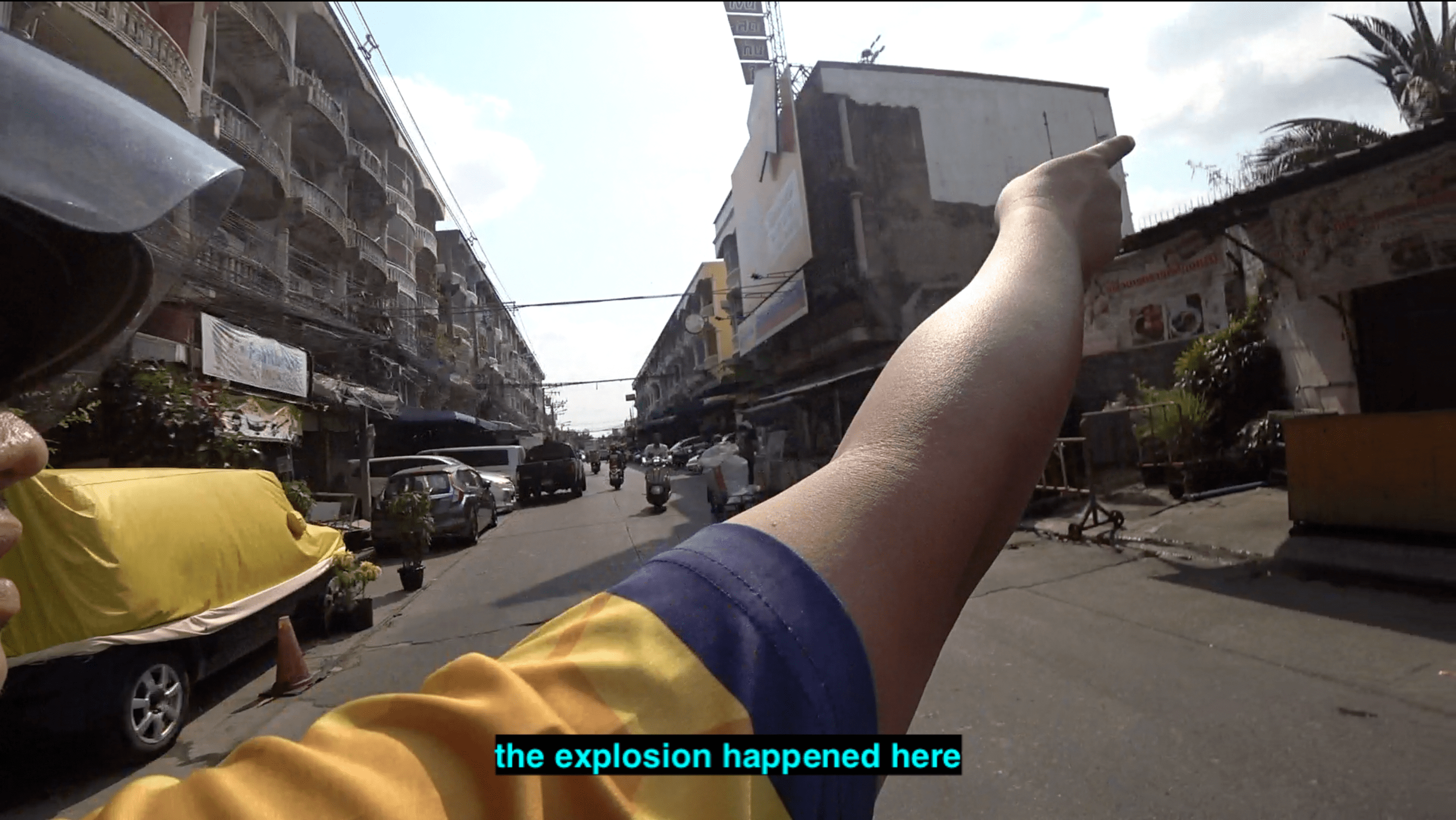

Then, just when it couldn’t get worse, something else happened in 1991…
A new, bigger port was opened called Laem Chabang. Due to the limitations of the Bangkok port, and the smaller canal size, only certain-sized boats could pass through. So, to ramp up operations and boost the economy even more, Laem Chabang was built close to the Gulf of Thailand.
Khlong Toei Port, once would have been responsible for 98% of Thailand’s outgoing and incoming goods, and listed as one of the world’s busiest ports, but after the new port opened, would shortly be de-throned and removed from the Lloyds list.
As a result, many lost their jobs. And, when combined with the fires that ravaged their homes, people began to turn to crime as a means to survive. It’s this part of history that Khlong Toei gets its reputation.
Some men would join the mafia, selling a popular drug called Ya Ba, which translates to English directly as “Crazy Drug”, a concoction of methamphetamine and caffeine. And some women would be forced to work join the booming sex trade to provide for their families.



During this period
Bulldozer (2008 – present)
Now the residents face a new issue. Soon, the very areas you’ve seen throughout this article may no longer exist. For years there have been plans to evict residents from these areas and build new developments. However, this time around, it looks like it’s coming to fruition much more rapidly. And, although residents have managed to successfully protest these developments for almost 20 years now, there are signs that this time round might be different.
Upon visiting you can see posters in the area that promote the new developments, which is a clear sign of this being serious.
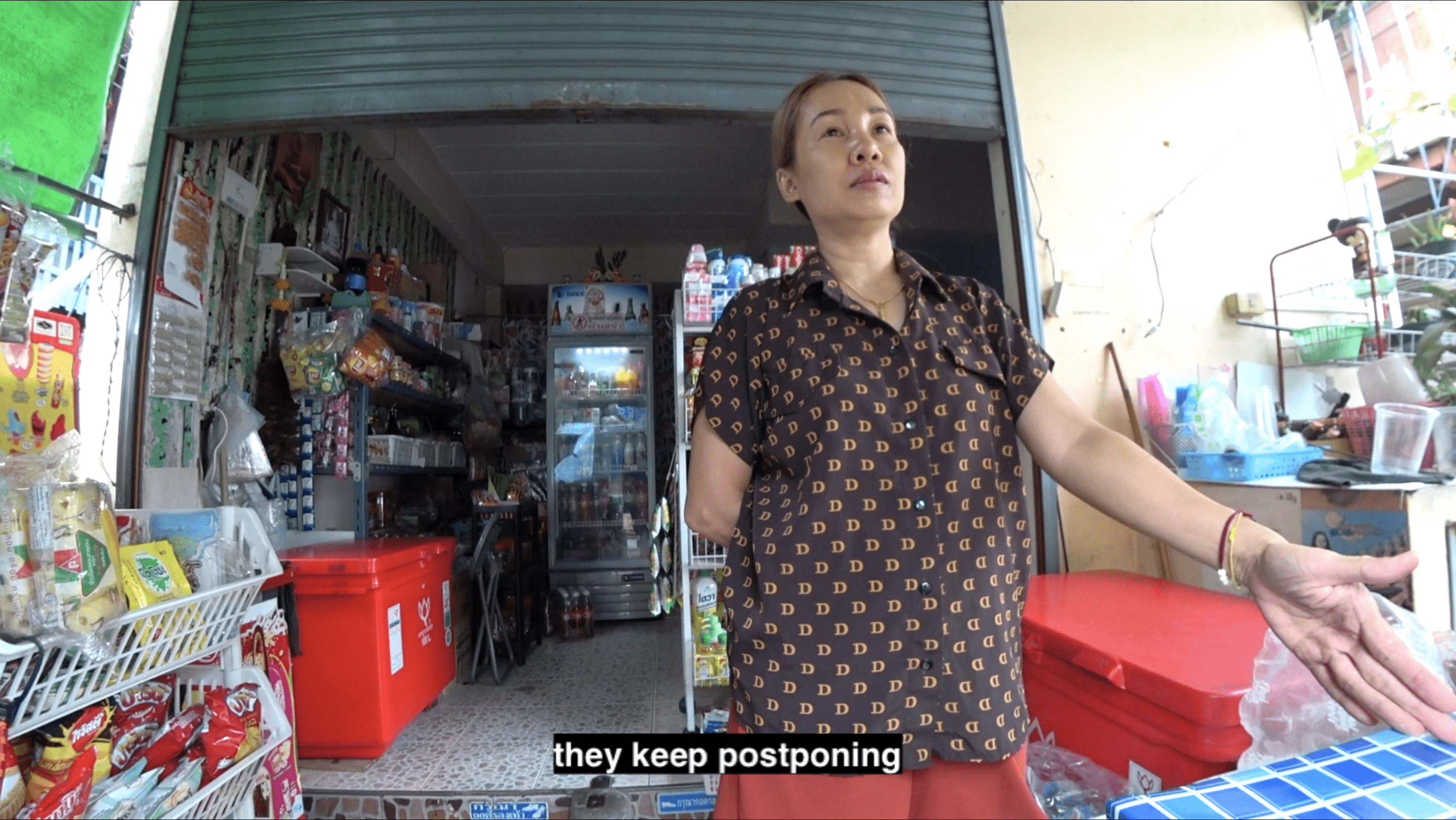

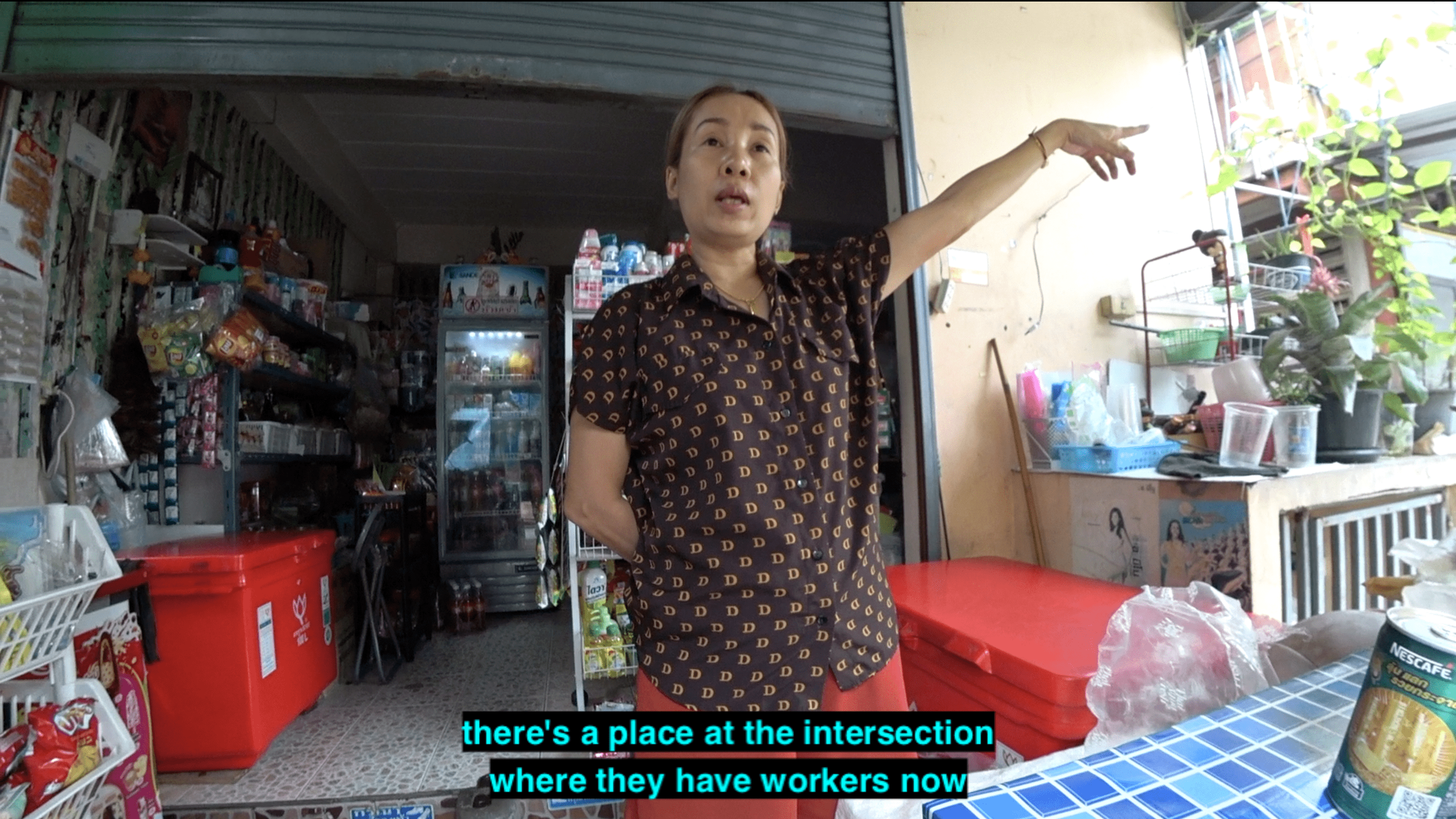
Deep in The Alleys of Khlong Toei, Jed Sip Rai
Upon arriving at this settlement, it was clear to see just how underprivileged this area was compared to the luxury developments of Bangkok nearby. If you just walk 20 minutes, you’ll find a luxury mall here that houses all kinds of designer delights but is so closely located seems to be one of the most underdeveloped parts of Bangkok.
But despite this, walking through Khlong Toei wasn’t as much of a shock as other places I’ve visited. The smells, open sewers, and other delights of this area were present, but it was surprisingly clean and well-developed considering that it’s got the title of a “slum”. Some people were building new homes with marble flooring, while others had a small bungalow for 6 to live in.
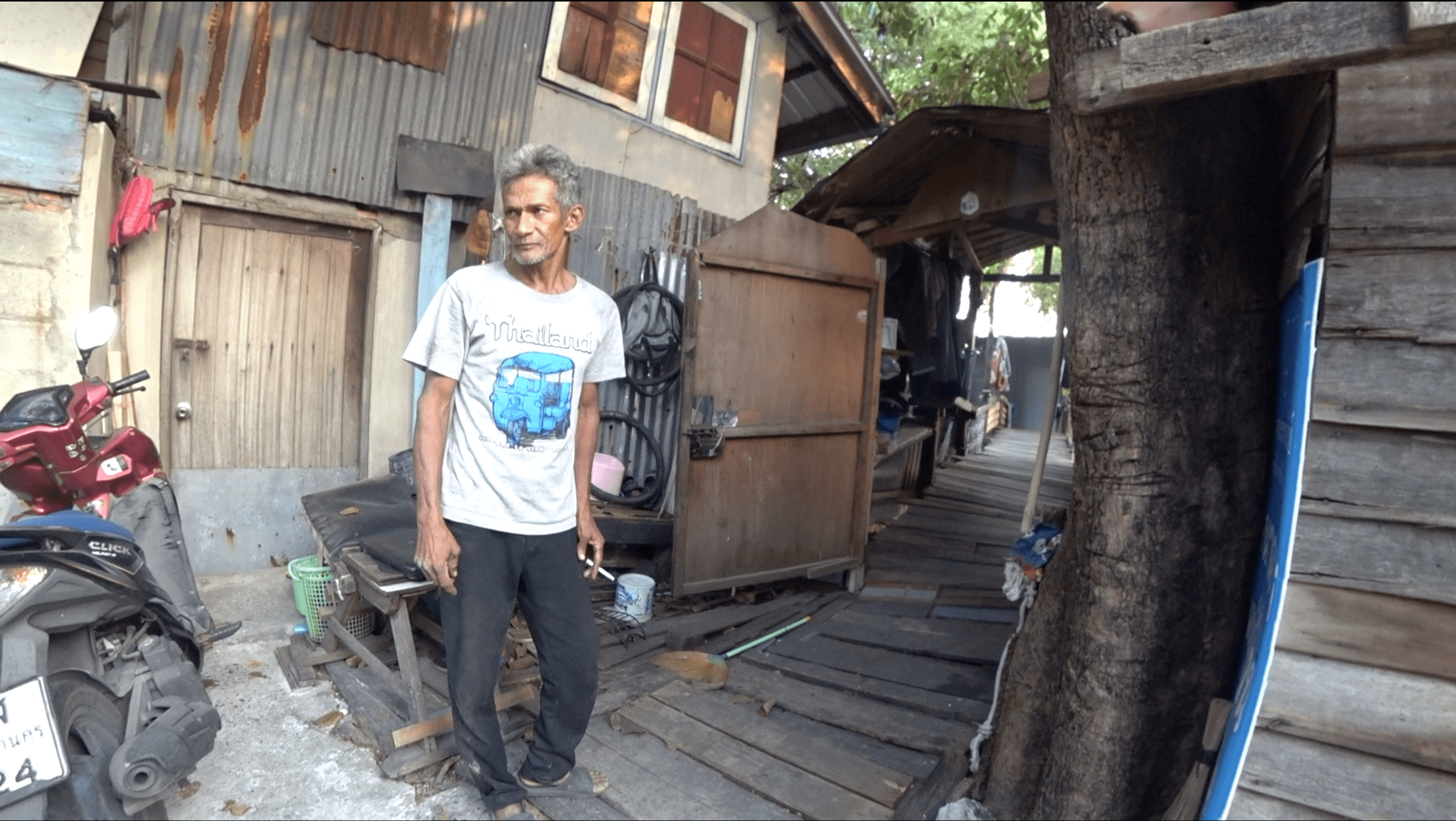

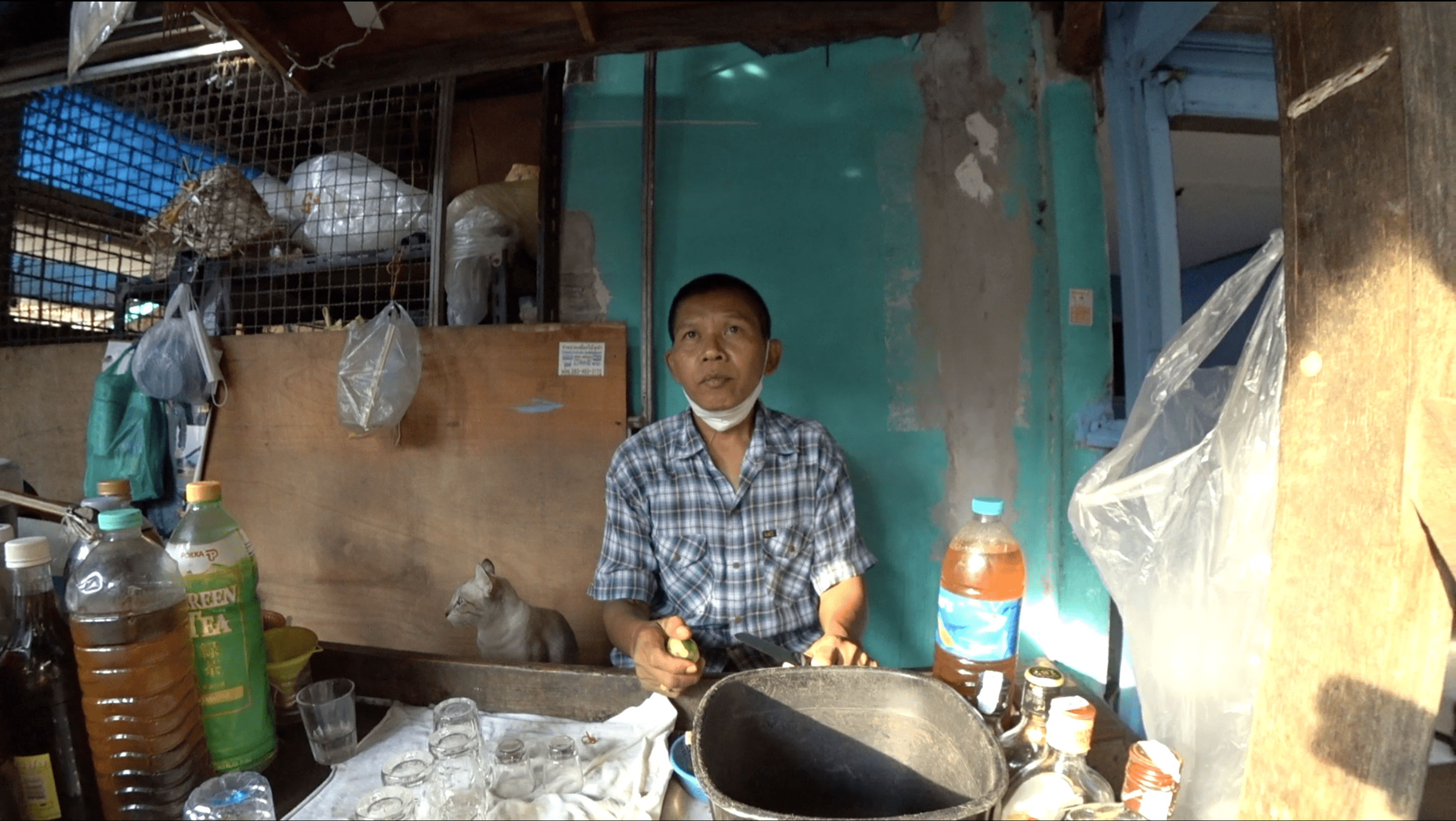


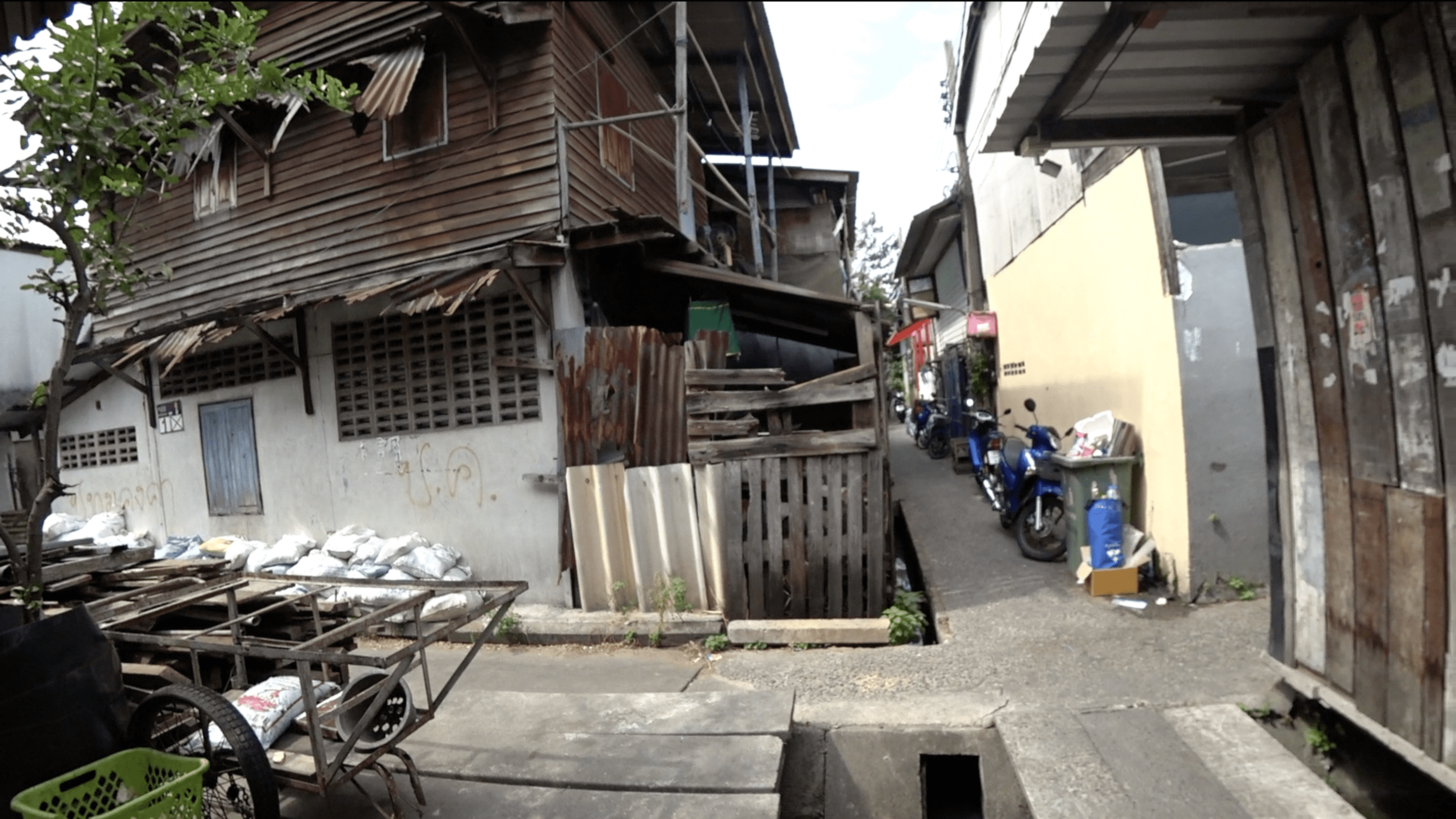
It appears that although still an area rife with poverty, it’s improving significantly. And despite the huge disparity between the poor and rich, there is a lot of hope for these people.
Many organizations have set up charities around here that provide schooling, health, and welfare services to the residents who are in need of it. Interestingly a lot of the residents also volunteer to help the centres out by providing more aid for those in need. It really is a wonderful thing to see humanity at its finest – everyone working together to make their situations better.
And, despite all the content online about this place being a drug-filled, crime-dominated, and poverty-stricken area, the community aspect of this little area is something that astonished me.
(people do take dr*gs here, but mostly people mind their own business and don’t get involved)
One lady told me “It’s like a community here, we’re like neighbours.” and that is indeed what it felt like.
I spent 3 days here, and while walking around I never felt out of place, or in danger. Probably the only bad thing was that someone laughed at me and denied me a haircut, so I went to another lady who charged me the local, Thai price and secured an interview with someone who had their entire house destroyed in the explosion (a win if you ask me).
Some of the most menacing-looking people, covered head to toe in tattoos, fostering what could be considered angry stares when smiled at or saying a simple hello would change their demeanor entirely from one of *perceived* anger, to joy and welcomeness.
People were extremely open and happy to let me ask questions about the problems here and were happy to see a foreigner coming to their little community. I got shown around someone’s house, to the incredible, newly built football field, swimming pools, and gym that locals can use at a discount, and many people were thankful I was there showing an interest in the history here and their story.
It reminded me of a small village community, tucked away from all the noise and craziness of Bangkok – something the locals took pride in.
The Pensioner Problem
While here, it was clear to see that some were on the brink of the poverty line.
At around 2 pm, I ran into a lady called Nan, who would show me her small Bungalow that housed 6 people. It was like a small shack, with just a couple of fans to keep the people inside cool, and they were all here for one reason – their sick mother and her treatment. While the mother stays at home, these people go out to work in nearby factories, to pool all their money together in hopes they’ll be able to afford her treatment.
Unfortunately for Nan, the pension scheme in Bangkok barely even covers her mother’s rent here.
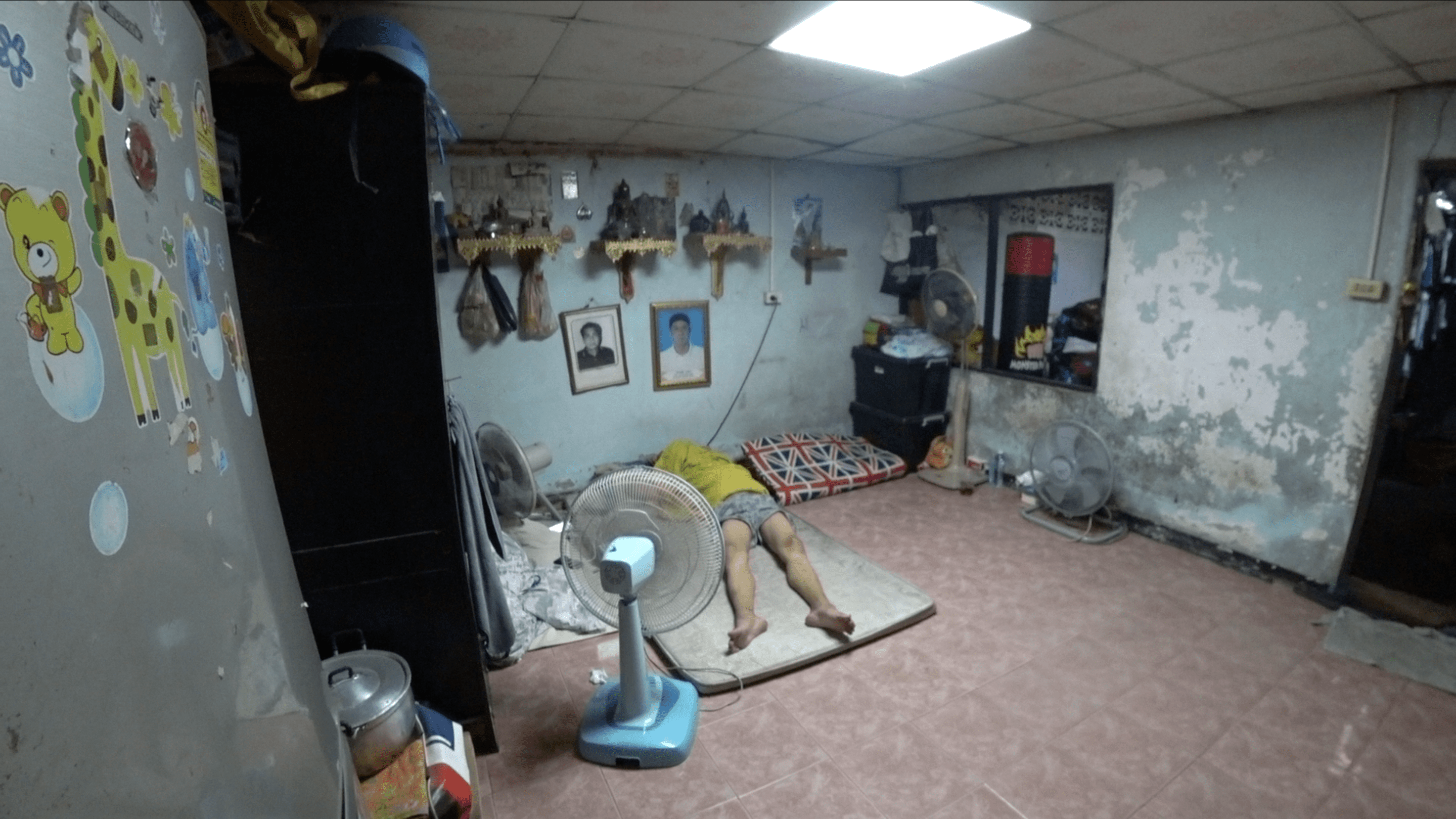
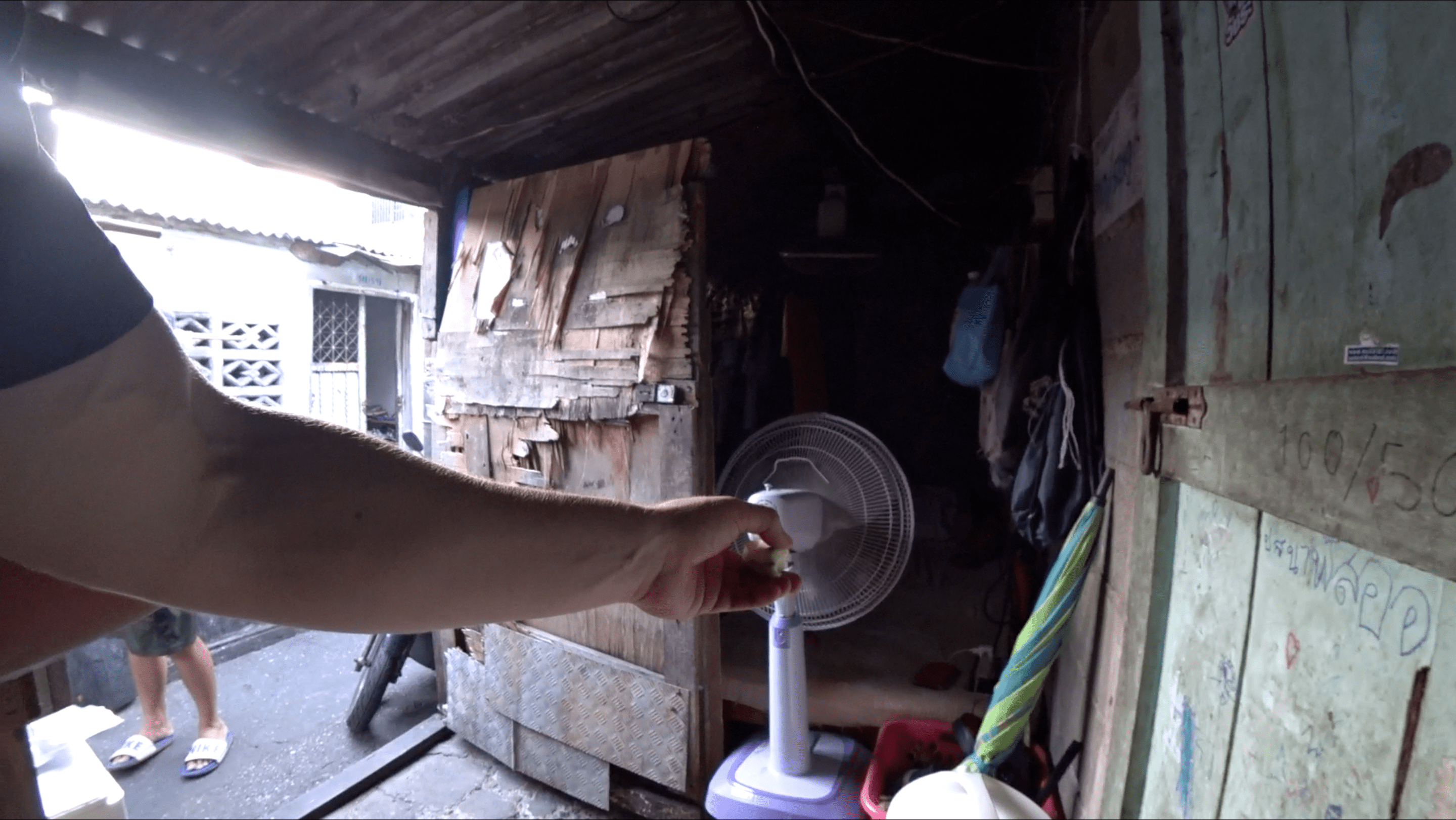
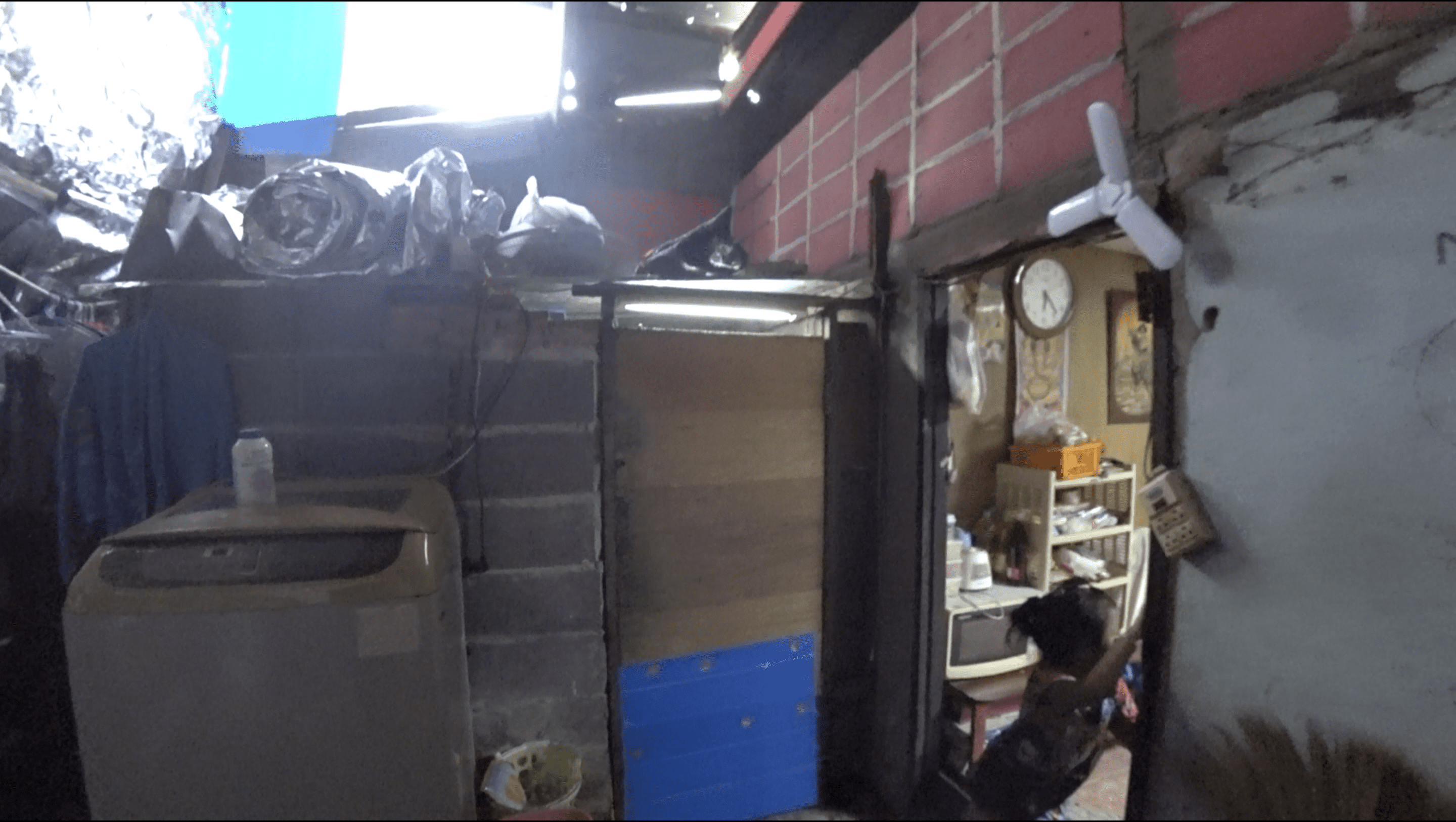
With the basic pension at only 600 baht per month ($16-20) for people aged 70-79, and rent at 320 baht per month, over half of her monthly pension is gone. Then, with extras to pay for like food, water, and electricity, it’s not hard to see that there is no possible way to afford the healthcare she needs on this wage.
Her mother can’t walk, she’s stuck in this little shack all day with only a fan to keep her cool – a cruel existence for someone in their final years of life.
To put this further into perspective, in Bangkok, a meal out with roughly set you back anywhere between 40-60 baht ($1-2). Although that might seem like a bargain to Western tourists, for an income of 600 baht per month, this is very expensive.
The story Nan has, is a story many across Thailand face, but specifically here in Jed Sip Rai, it’s a big problem.
Crumbling & Flooding Homes
The difference between people’s homes as you walk around is quite astonishing in this area. The bigger high-rise flats are quite new, and although don’t look appealing are at least able to withstand the harsh monsoon seasons and floods, when compared with their groundfloor counterparts.
The effects of the weather can be seen very clearly in some places, with houses that look like they are on the verge of falling over. Wooden huts, built on stilts, provided for the workers in the port all those years ago that have not been kept well. But, in hilarious Thai spirit, many have stickers of pornographic models plastered to the outside, showing off their favoured eye candy – ironically, some even have aircon units installed – half broken, falling over, wooden beach-hut-like accommodation, with expensive air con units to keep cool.


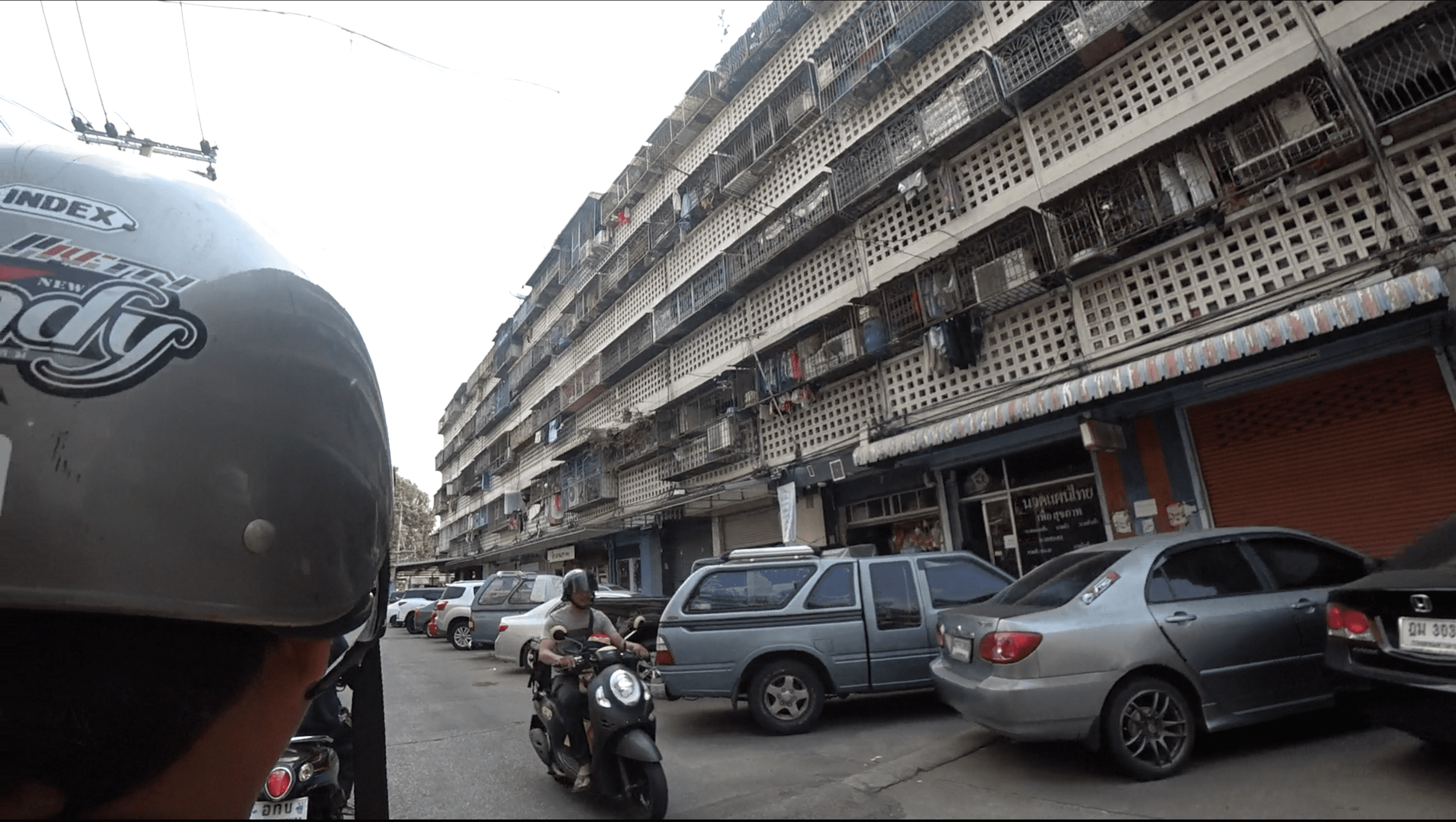

When talking with many residents, there were a few who told me how difficult it was to live here during the floods. When it floods here, and you have a house on the ground floor, the water is going into your home.
One lady told me it usually enters her home at about ankle height. Just imagine having to live in a half-flooded house for a couple of months out of the year. And with the open sewers, I dread to think what’s in that water that comes through – some of the worms/bugs seen in those systems did not look like something you want in your home or anywhere near your skin for that fact.
The Great Relocation Resolution
This place needs development. Whether people want it or not, the government is right to build here and improve the quality of life for the people here. However, how it is being done right now is simply to evict them or provide other housing in another district which may cost more. What will the poor do? The people whose parents helped to build this area in the first place?
Surely they have a right to the land, despite being officially owned by the port. Or if not, at least an amicable solution that fits all can be reached?
With developments near the area already happening according to Fon, a Thai lady who owns a shop in the area, community members are not sure which of the communities will be first to go in the area.
After interviewing many residents, they’re very averse to this happening, but the government has plans to make Khlong Toei the next big business district in Bangkok, and there are signs promoting the Smart Development and Smart City the government plans to build here.
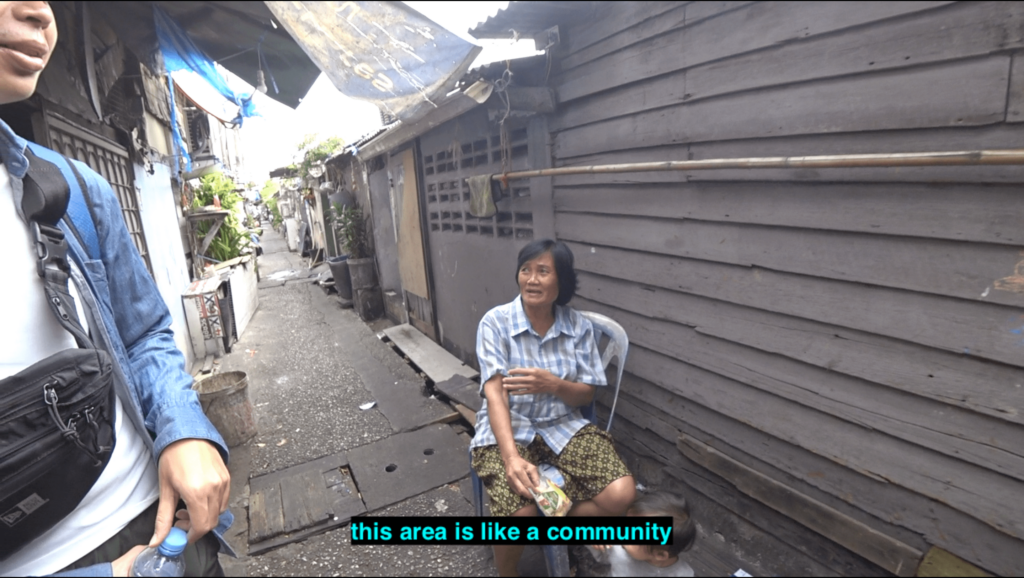


The only thing the residents can do here is protest. And, for 30 years they’ve managed to be successful with this, but with the increasingly large number of luxury condos and developments popping up in Bangkok, the bell is being rung.
What will happen to the residents who don’t own land and only rent?
Only time will tell. A resolution hasn’t been reached just yet, and people are continually protesting, because they love the little community they’ve built, and it’s hard not to agree with them! What they have is totally different from anywhere else in Bangkok… it’s a beautiful, tight-knit community that cares for one and other and is almost like a small village in all the urban chaos surrounding it.
The type of community people crave, so you can understand why they want to hang onto it.
How To Visit Jed Sip Rai & Khlong Toei
There are 3 ways to visit Khlong Toei slum:
- By BTS (Skytrain) – go to Ekkami and walk 33 minutes, or take a Grab/Bolt taxi to เจ็ดสิบไร่ (Jed Sip Rai) from there.
- By MRT – take the MRT Blue Line to Khlong Toei, once you are there you can call a Grab or Bolt motorbike taxi to เจ็ดสิบไร่ (Jed Sip Rai). This should cost you around 40-80 baht depending on the time and traffic conditions ($1-2).
- By bus – Get the 1-39EV bus directly to the port. The port is located next to the slum, so it will take you to the entrance of the port, and then you can walk 27 minutes to get into the main area.
Please do not go for poverty p*rn. Please only go if you are genuinely interested in hearing the people’s stories and learning about their culture.
If you would like to volunteer here, the organizations are always looking for help. Just walk into one of the centres and ask how to volunteer or check online (preferable).
Big thank you to Tim Russel Photography (photographer for thumbnail):
- Insta: https://www.instagram.com/timrussellphotography/?hl=en
- Website: https://www.timrussellphotography.asia/

I’m Harry – and I was tired of the same old “10 best places I’ve never been but I’m writing about for some reason” blog posts. So… I’m a young traveller on a mission to travel the world and share my true, unfiltered experience, including all the gristly details. From packing my life into one bag for a year, to traveling Vietnam by motorbike, to sorting out Visas for specific countries – I’ve done it all, am doing it all and only give my advice on things I have done – not regurgitated cr*p from another source *cough* most publications *cough*. So bear with us! This project will take some time to grow, and will take a fair bit of money. But I’m determined to make it the single best source of information about traveling on the internet.
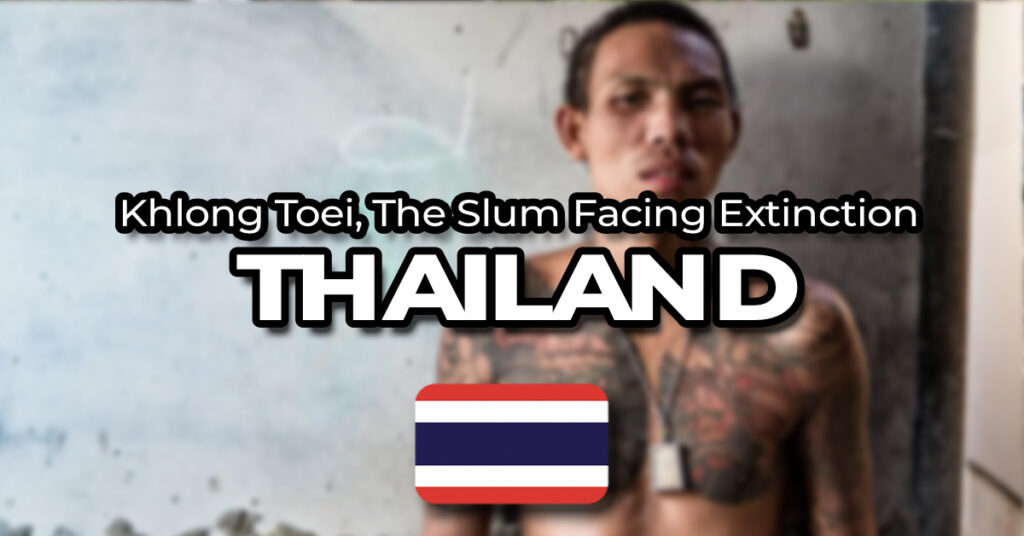


Good show Harry m8